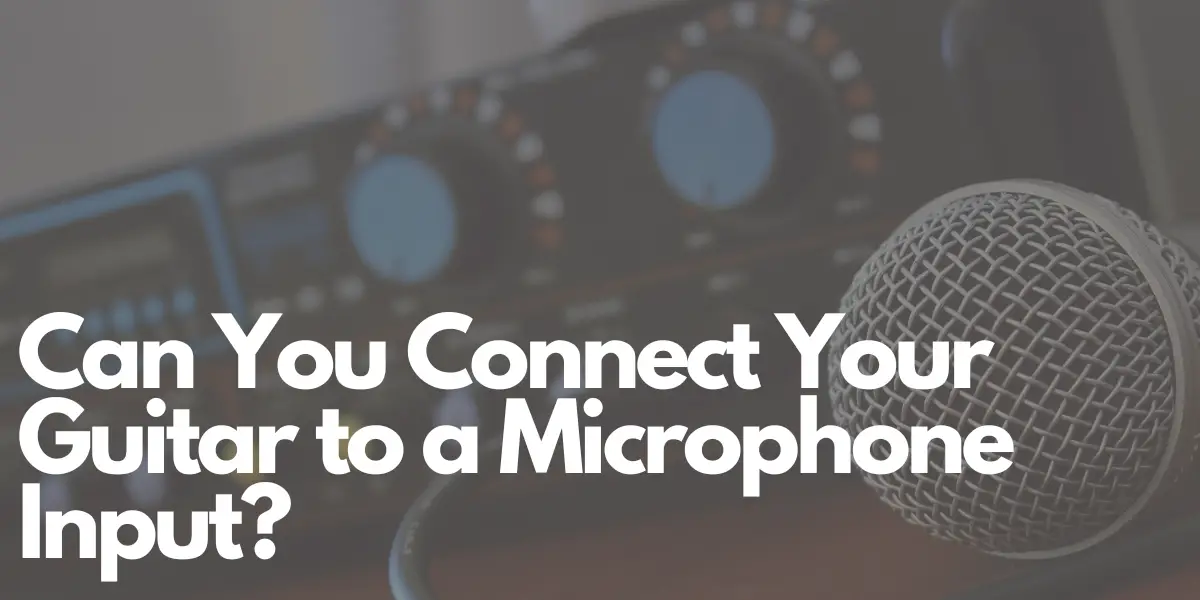Musicians are known for their adaptability, often having to make the most of the equipment at hand. One common question that arises is whether it’s safe and feasible to plug a guitar into a microphone input. In this guide, we’ll delve into the technical details of this scenario, discuss the challenges it presents, and offer solutions and safety guidelines to help you navigate this unique situation.
Understanding Guitar and Microphone Inputs
To answer this question, it’s essential to comprehend the fundamental differences between guitar and microphone inputs.
Guitar Input: These are often labeled as “Hi-Z” or “Instrument” inputs. They are designed to handle the high-impedance signals generated by electric guitars. Guitar inputs typically have a high input impedance, matching the output of a guitar’s pickups.
Microphone Input: Also known as “XLR” inputs, they are specifically designed for low-impedance signals from microphones. Microphone inputs have significantly lower input impedance compared to guitar inputs.
Plugging a Guitar into a Microphone Input: The Challenges
Connecting your guitar to a microphone input might seem like a convenient option, but it comes with its set of challenges, primarily due to impedance mismatch.
1. Impedance Mismatch: As previously mentioned, guitars produce a high-impedance signal, while microphone inputs are tailored for low-impedance signals. Plugging your guitar directly into a microphone input can lead to a significant impedance mismatch.
2. Signal Loss: The impedance mismatch can result in signal loss and degradation, leading to a weaker, less clear, and potentially noisy sound.
3. Tone Alteration: The altered impedance can also affect your guitar’s tone, making it sound different from what you’d expect when using a dedicated guitar amplifier.
Solutions and Safety Guidelines
If you find yourself in a situation where you need to connect your guitar to a microphone input, here are some solutions and safety guidelines to consider:
1. Use a Direct Box (DI Box): A DI box is a device designed to bridge the impedance gap between your guitar and the microphone input. It converts the high-impedance guitar signal into a low-impedance signal compatible with microphone inputs.
2. Utilize an Adapter Cable: You can use an adapter cable with the appropriate connectors, such as a 1/4-inch TS (guitar) to XLR adapter cable. While this method can work in a pinch, it may not provide the best sound quality due to the impedance mismatch.
3. Adjust Gain and Volume: When connecting your guitar to a microphone input, be sure to carefully adjust the gain and volume settings to prevent clipping and distortion.
4. Monitor for Noise: Be vigilant for any unwanted noise or interference, as the impedance mismatch may introduce noise into the signal.
5. Consider a Guitar Amp or Preamplifier: Whenever possible, opt for a guitar amplifier or a dedicated guitar preamplifier with a suitable guitar input. This approach ensures the best sound quality and eliminates impedance-related issues.
In conclusion, while it is technically possible to plug your guitar into a microphone input, it is not the most ideal or recommended solution due to impedance mismatch and potential sound quality issues. To achieve the best results and preserve your guitar’s tone, it is advisable to use a direct box (DI box), an adapter cable, or a dedicated guitar amplifier or preamplifier when available. By following these guidelines and understanding the technical aspects involved, you can make informed decisions about connecting your guitar to various audio inputs.
Author: Mike P
Hi! My name is Mike! I’ve been an apartment producer/musician for 10+ years. I’ve played in punk bands, released EDM tunes on Beatport and iTunes, and have a semi-successful stock music portfolio. Read more…


